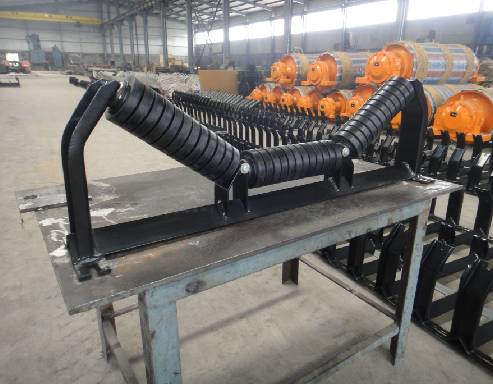 Afrikaans
Afrikaans  Albanian
Albanian  Amharic
Amharic  Arabic
Arabic  Armenian
Armenian  Azerbaijani
Azerbaijani  Basque
Basque  Belarusian
Belarusian  Bengali
Bengali  Bosnian
Bosnian  Bulgarian
Bulgarian  Catalan
Catalan  Cebuano
Cebuano  Corsican
Corsican  Croatian
Croatian  Czech
Czech  Danish
Danish  Dutch
Dutch  English
English  Esperanto
Esperanto  Estonian
Estonian  Finnish
Finnish  French
French  Frisian
Frisian  Galician
Galician  Georgian
Georgian  German
German  Greek
Greek  Gujarati
Gujarati  Haitian Creole
Haitian Creole  hausa
hausa  hawaiian
hawaiian  Hebrew
Hebrew  Hindi
Hindi  Miao
Miao  Hungarian
Hungarian  Icelandic
Icelandic  igbo
igbo  Indonesian
Indonesian  irish
irish  Italian
Italian  Japanese
Japanese  Javanese
Javanese  Kannada
Kannada  kazakh
kazakh  Khmer
Khmer  Rwandese
Rwandese  Korean
Korean  Kurdish
Kurdish  Kyrgyz
Kyrgyz  Lao
Lao  Latin
Latin  Latvian
Latvian  Lithuanian
Lithuanian  Luxembourgish
Luxembourgish  Macedonian
Macedonian  Malgashi
Malgashi  Malay
Malay  Malayalam
Malayalam  Maltese
Maltese  Maori
Maori  Marathi
Marathi  Mongolian
Mongolian  Myanmar
Myanmar  Nepali
Nepali  Norwegian
Norwegian  Norwegian
Norwegian  Occitan
Occitan  Pashto
Pashto  Persian
Persian  Polish
Polish  Portuguese
Portuguese  Punjabi
Punjabi  Romanian
Romanian  Russian
Russian  Samoan
Samoan  Scottish Gaelic
Scottish Gaelic  Serbian
Serbian  Sesotho
Sesotho  Shona
Shona  Sindhi
Sindhi  Sinhala
Sinhala  Slovak
Slovak  Slovenian
Slovenian  Somali
Somali  Spanish
Spanish  Sundanese
Sundanese  Swahili
Swahili  Swedish
Swedish  Tagalog
Tagalog  Tajik
Tajik  Tamil
Tamil  Tatar
Tatar  Telugu
Telugu  Thai
Thai  Turkish
Turkish  Turkmen
Turkmen  Ukrainian
Ukrainian  Urdu
Urdu  Uighur
Uighur  Uzbek
Uzbek  Vietnamese
Vietnamese  Welsh
Welsh  Bantu
Bantu  Yiddish
Yiddish  Yoruba
Yoruba  Zulu
Zulu Understanding Conveyor Belt Guide Rollers for Efficient Material Handling Systems
Understanding Conveyor Belt Guide Rollers
Conveyor belt systems are integral to modern industrial operations, facilitating the efficient movement of materials across various sectors such as manufacturing, mining, and packaging. Among the critical components of these systems are conveyor belt guide rollers. These components play a vital role in ensuring that the conveyor belts function smoothly and reliably. In this article, we will explore the purpose, types, and maintenance of conveyor belt guide rollers.
Purpose of Conveyor Belt Guide Rollers
Guide rollers, often referred to as belt rollers or support rollers, have several essential functions in a conveyor system. Primarily, they provide support for the conveyor belt, helping to maintain its alignment and preventing it from drifting or misaligning during operation. Misalignment of the belt can lead to increased wear and tear, reduced efficiency, and potential system breakdowns.
Additionally, guide rollers assist in the smooth movement of the belt as it traverses various angles and inclines. They reduce friction between the belt and the underlying structure, ensuring that the motion is straightforward and energy-efficient. By guiding the belt along its intended path, these rollers enhance overall system productivity and longevity.
Types of Guide Rollers
There are several types of conveyor belt guide rollers, each designed to meet specific operational requirements. The most common types include
1. Fixed Rollers These are stationary rollers that provide support and stability to the conveyor belt throughout its path. Fixed rollers are typically used in straight conveyor systems.
conveyor belt guide rollers

2. Adjustable Rollers These rollers can be repositioned to accommodate varying belt widths or to make adjustments for maintenance needs. Adjustable rollers add versatility to conveyor systems.
3. Return Rollers Located on the return section of the conveyor belt, return rollers support the belt as it travels back to the loading point. They help minimize belt sagging and maintain optimal tension.
4. Guiding Rollers Specifically designed to guide the belt along its path, these rollers are strategically placed at the edges of the conveyor to prevent lateral movement and ensure accurate tracking.
5. Impact Rollers Positioned at loading areas, impact rollers are designed to absorb the energy of falling materials. They reduce the likelihood of belt damage when heavy items land on the belt, extending the life of the conveyor system.
Maintenance of Guide Rollers
Proper maintenance of conveyor belt guide rollers is crucial for ensuring their efficiency and longevity. Regular inspections should be conducted to check for wear and tear, alignment issues, and signs of damage. Lubrication is essential for reducing friction and preventing corrosion, particularly in environments where dust and moisture are prevalent.
Additionally, it is essential to maintain the overall cleanliness of the conveyor system. Dirt and debris can accumulate on rollers, causing the belt to track poorly and reducing operational efficiency. Implementing a regular cleaning schedule can help mitigate these issues.
In conclusion, conveyor belt guide rollers are essential components that facilitate the smooth operation of conveyor systems across various industries. Understanding their purpose, types, and maintenance requirements is critical for optimizing conveyor performance. By investing in quality guide rollers and adhering to maintenance best practices, businesses can enhance productivity, reduce downtime, and extend the lifespan of their conveyor systems.





























